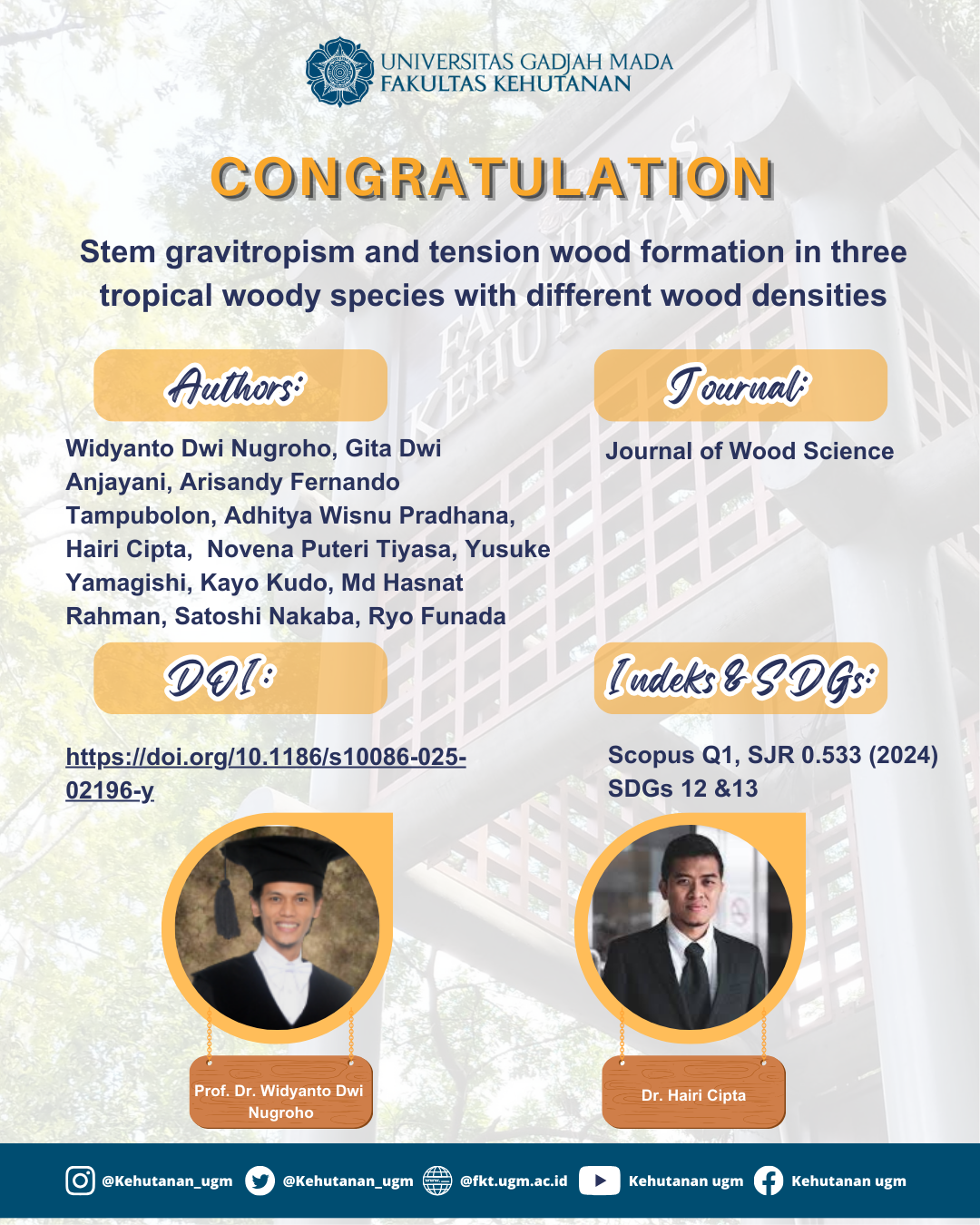
Abstract
Angiosperm trees develop tension wood on the upper side of leaning stems to reorient the direction of stems towards their normal positions in response to a gravitational stimulus. The development of gelatinous fibers with thick inner gelatinous layers (G-layers) might elevate tensile stress required for such reorientation in many angiosperm species. This study aims to investigate negative gravitropism and tension wood formation in response to a gravitational stimulus in tree species with different respective wood densities. Seedlings of three tropical trees, namely, Diospyros celebica, Artocarpus heterophyllus, and Falcataria moluccana were artificially inclined at 45° from the vertical and harvested three months later for analysis of plant gravitropism and tension wood formation. Inclined seedlings of the three species exhibited different rates of stem recovery and movement towards the vertical. The widths of region of tension wood in the thickness of G-layers were positively correlated with the negative gravitropism of stems. However, such relationships differed significantly among the three species. The differences in patterns of negative gravitropism of stems, widths of tension wood and thicknesses of G-layers in inclined seedlings of F. moluccana, A. heterophyllus, and D. celebica were due to differences among species rather than to differences in the wood density of the respective species. Larger amounts of gelatinous fibers and/or thicker G-layers were essential for the negative gravitropism of inclined stems. However, each tree species exhibited different features during stem recovery.
SDGs:
SDG 12:Responsible Consumption and Production
SDG 13:Climate Action
Link Dokumen:
Download
